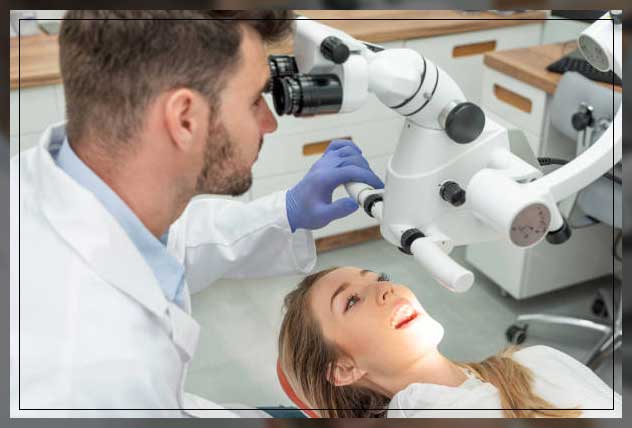
With its high magnification and coaxial illumination, a dental microscope is a convenient tool. It provides enhanced visualization that often supports both diagnosis and treatment. Moreover, the documentation capabilities of a microscope play a significant role in modern dental practice.
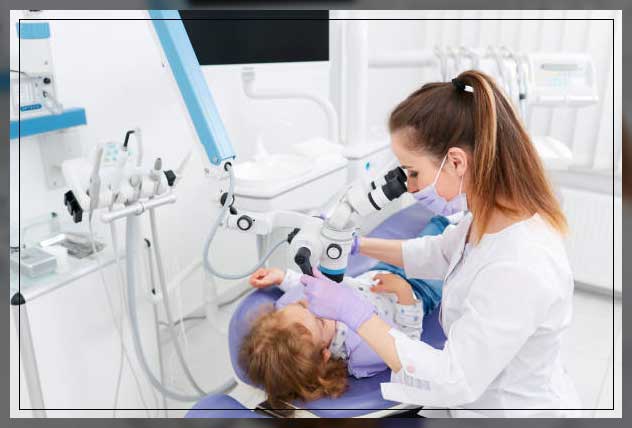
If you are unfamiliar with dental microscopes, our team has outlined what they are, the benefits they may provide to your dentist, and why they are important in dentistry.
Benefits of Using a Dental Microscope
As you might know, in dentistry, there are many benefits of using a dental microscope. Much of what we do requires us to visualize fine details within the patient’s mouth. Dentists need to work with a high degree of accuracy. For this reason, you might have noticed dentists wearing special magnifying eyeglasses called loupes. They provide a more zoomed-in, detailed view while working.
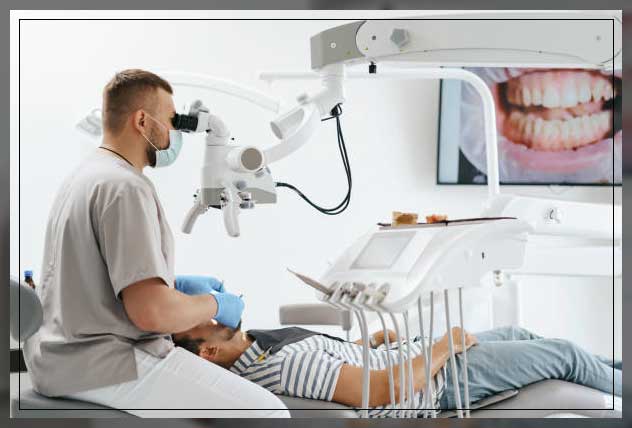
However, the ultimate magnification is delivered by the dental microscope your dentist will use during the operation. This microscope provides the following:
- Deeper depth of focus.
- Wider field of view.
- Superior illumination of the mouth.
Today many use a dental microscope in their endodontic practice. Once you use it, you can quickly appreciate the advantages of ad hoc documentation. Instead of the complicated procedure of examining your teeth.
Your dentist can take photos of the findings with an intraoral camera and can later discuss them with the patients. Your dentist can look through the microscope from the beginning. They can also take photos during the examination and discuss them directly afterward without having to get a camera.
What is the Role of a Dental Microscope in Microscopic Dentistry?
The dental microscope is a high-tech piece of dental instrument or equipment that is quite similar in appearance to a desktop stereo microscope. But you need to understand that it has several additional features.
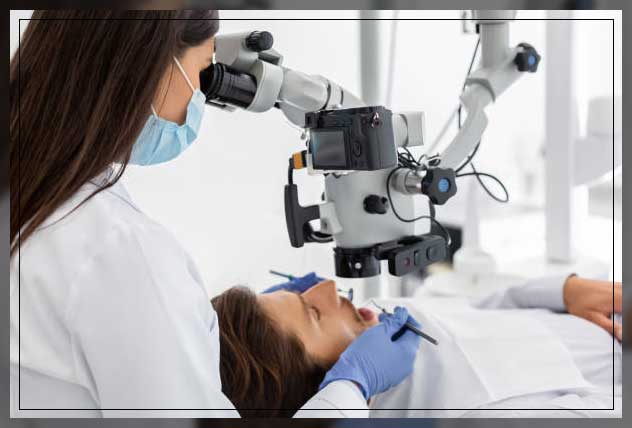
The equipment is usually mounted to the wall or ceiling by a movable arm. The design is such that it can be moved over the patient’s head whilst the person lies in the dental chair. It provides a clear view into your mouth.
A bright LED light often attached to the scope provides shadow-free illumination of the patient’s mouth, and various controls will allow your dentist to:
- Change the magnification level
- Fine tune the focus
- Turn filters on when performing different procedures
- Take pictures or videos during the procedure for patient education
Advantages of a Dental Microscope
There are many benefits of using a dental microscope for dentistry. The dental microscope increases the magnification and the illumination it provides is also beneficial. Some of the other benefits include:
1. Different levels of magnification
Dental microscopes offer a range of magnification levels. They typically range from 2x to 30x. It is so convenient that your dentist can easily zoom in and out on different structures inside the mouth. This zooming is very important as other dental procedures in dentistry often require different levels of magnification.
2. Illumination
The mouth is a dark, shadowy zone to work. At the same time shining a light at the right angle to work effectively could be challenging.
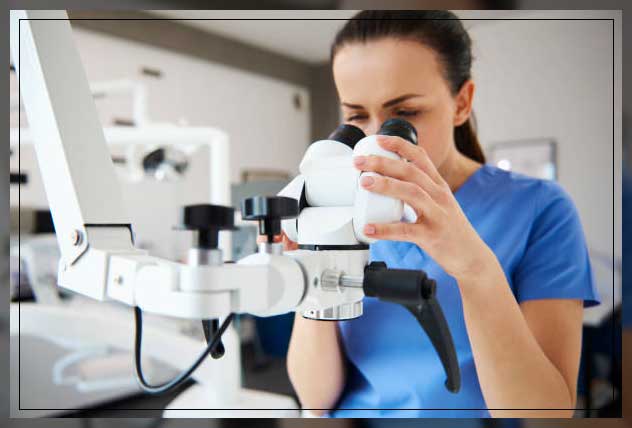
A huge advantage of dental microscopes is that they have a bright coaxial light source. Because the light is on the same axis as where the dentist is looking – the patient’s mouth will always be illuminated perfectly without shadowing. Your dentist can carry out the procedure with the help of a microscope.
3. Early diagnosis
As is often the case in any medical field, early detection of health problems can have better outcomes. It also leads to improved outcomes. Significantly, a microscope can help early and quickly detect tooth problems.
The enhanced vision of the dental microscope means that your dentist can easily view the issues. Your dentist can identify issues such as dental decay, cracked teeth, and gum disease at an earlier stage. As a result, your dentist can address and treat these dental issues before they become a major problem.
4. Precision
The magnified view of the microscope allows your dentist to see much finer details. This, in turn, can help improve tooth preparation accuracy. It will also ensure that fillings and crowns fit more precisely.
Furthermore, the microscope can improve aesthetics as your dentist can polish veneers and fillings to a finer finish.
5. Ergonomics
Rather than leaning over to visualize a patient’s mouth, the dental microscope allows your dentist to sit in a comfortable, upright position whilst working. Most importantly, the posture is proper. It reduces back and necks strain significantly. This means your dentist can work more efficiently.

Do you know that, unfortunately, many dentists have been forced into early retirement? It is probably due to neck and back issues as they have to sit for long hours. It may even extend their career.
6. Patient education
The microscope is connected to a live video which is usually displayed on the ceiling monitor. So even you can see what the dentist sees. These results will give you a better understanding of what the dentist is doing and explaining.
Furthermore, it can be beneficial if you are curious and want to view the whole procedure. It is an excellent opportunity as you can closely watch each step your dentist carries out.
7. Root canal treatment
During a root canal procedure, the dental microscope allows the dentist to locate, clean, and fill extra canals and spaces within the tooth. Which otherwise have been missed. Hence the microscope is handy during the procedure.
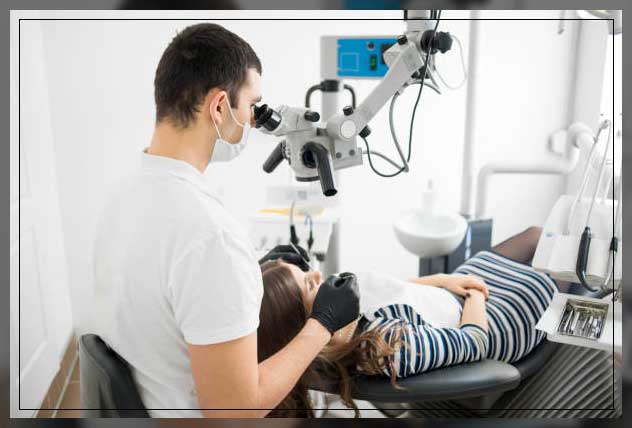
The improved light and magnification provided by the microscope also allow the treatment of blocked or calcified canals. During the procedure, it is an important step.
In addition, root canal treatment may be performed more perfectly when your dentist uses a microscope. It ensures that minimal tooth structure is removed during the treatment. All these factors may help to increase the chances of a successful outcome for root-treated teeth.
Which Treatments Need a Dental Microscope?
Beginning with the examination and the diagnosis, your dentist will use the dental microscope in all aspects of their work. They are particularly used in restorative and prosthetic dentistry and endodontics. The microscope as you know is a real gain in many procedures. Especially – in complicated extractions of root fragments, the procedure is easier to do with a microscope.
In the case of root tip resections, dentists often have focusing difficulties due to the restricted access to the retrograde portions with a mirror and a loupe. The loupe magnification is not enough and is not high enough to see really well inside the mouth.
But with the use of a microscope, your dentist can choose between an 8x, 16x or 20x magnification to see exactly the inside of the mouth. It’s amazing the things you thought you could see before and the things you actually see today with the microscope!
You can understand the advantages of the microscope in simple examples. Performing filling involving an occlusal filling area and preparing a tooth for a crown. When your dentist will do a filling involving an occlusal filling area, they always encounter the problem of fissures in the tooth. These fissures might already be infected. With a microscope your dentist can decide exactly how wide the filling has to be. The microscope will ensure that all the decay has been removed from the fissure area. So the use of a microscope can help to avoid failures.
Other Procedures When Dental Microscope is Used
Apart from pulp therapy and root canal treatment, you may find that your dentist uses a microscope for treatments such as:
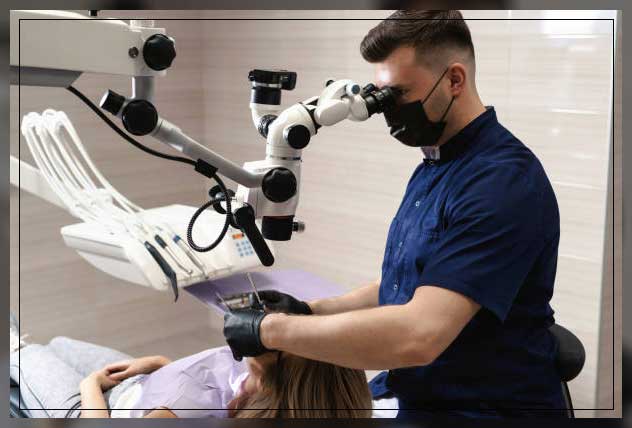
- Restorative procedures
- Patient examinations
- Crown preparations
- Cosmetic procedures e.g. veneers
- Treatment of gum disease
- Oral surgery
- Tooth implant
Why Work with a Dental Microscope?
You need to understand that the operating microscope (OM) is not restricted to endodontics, nor is it an instrument or equipment only designed to search for the entrance of the canals.
The instrument can be used permanently in daily practice and can replace the use of magnifying glasses in a very favorable way. The fatigue of your eyes when focalizing – with or without magnifying glasses disappears when you use the microscope. Probably because the eyes get to see a more precise image inside the patient’s mouth as the light on the microscope lights up the area without any shade.
The magnification feature allows you to improve your work’s precision and quality. Therefore, it increases your satisfaction.
The more you keep using the microscope, several health benefits also exist. The microscope imposes a physiological position, which relieves spine problems from which many dentists suffer. The camera fitted in the instrument allows easy visibility during the dental procedure.
Conclusion
Every procedure or therapy requires precise vision. To achieve this goal, cutting-edge technology and in-depth clinical knowledge are critical. Today dentists are offering treatments based on visual examination.
Today there is a significant change from perceptible-based treatment to high magnification treatment using a dental microscope. These advanced equipment give increased success rates.
It is important to note that a dental microscope is an excellent tool for diagnosis, treatment, and education. The exact issue inside the oral cavity of a patient can easily be diagnosed under the microscope. The dental microscope also makes it easier to educate auxiliary staff and the patient.
Read related topics on injection syringe, dental lab, dental tools, x ray machine, dental unit, Littmann stethoscope, and more


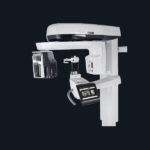
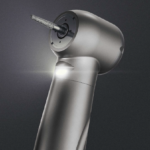
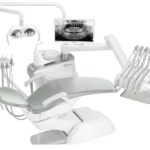
Comments